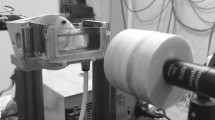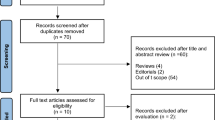Abstract
Objectives
Holmium–YAG (Ho:YAG) laser lithotripsy is a multi-pulse treatment modality with stochastic effects on the fragmentation. In vitro investigation on the single-pulse-induced effects on fiber, repulsion as well as fragmentation was performed to identify potential impacts of different Ho:YAG laser pulse durations.
Materials and methods
A Ho:YAG laser system (Swiss LaserClast, EMS S.A., Nyon, Switzerland) with selectable long- or short-pulse mode was tested with regard to fiber burn back, the repulsion capacity using an underwater pendulum setup and single-pulse-induced fragmentation capacity using artificial (BEGO) stones. The laser parameters were chosen in accordance with clinical application modes (laser fiber: 365 and 200 µm; output power: 4, 6 and 10 W in different combinations of energy per pulse and repetition rate). Evaluation parameters were reduction in fiber length, pendulum deviation and topology of the crater.
Results
Using the long-pulse mode, the fiber burn back was nearly negligible, while in short-pulse mode, an increased burn back could be observed. The results of the pendulum test showed that the deviation induced by the momentum of short pulses was by factor 1.5–2 higher compared to longer pulses at identical energy per pulse settings. The ablation volumes induced by single pulses either in short-pulse or long-pulse mode did not differ significantly although different crater shapes appeared.
Conclusion
Reduced stone repulsion and reduced laser fiber burn back with longer laser pulses may result in a more convenient handling during clinical application and thus in an improved clinical outcome of laser lithotripsy.






Similar content being viewed by others
References
Bader MJ et al (2012) Contemporary management of ureteral stones. Eur Urol 61(4):764–772
Bagley DH (2004) Ureteroscopic surgery: changing times and perspectives. Urol Clin N Am 31(1):1–4
Chow GK et al (2003) Ureteroscopy: effect of technology and technique on clinical practice. J Urol 170(1):99–102
Kauer PC et al (2005) Present practice and treatment strategies in endourological stone management: results of a survey of the European Society of Uro-technology (ESUT). Eur Urol 48(2):182–188
Marks AJ, Teichman JM (2007) Lasers in clinical urology: state of the art and new horizons. World J Urol 25(3):227–233
Sofer M et al (2002) Holmium:YAG laser lithotripsy for upper urinary tract calculi in 598 patients. J Urol 167(1):31–34
Teichman JM (2002) Laser lithotripsy. Curr Opin Urol 12(4):305–309
Sroka R et al (2012) In vitro investigations of repulsion during laser lithotripsy using a pendulum set-up. Lasers Med Sci 27(3):637–643
Eisner BH, Pengune W, Stoller ML (2009) Use of an antiretropulsion device to prevent stone retropulsion significantly increases the efficiency of pneumatic lithotripsy: an in vitro study. BJU Int 104(6):858–861
Mues AC, Teichman JM, Knudsen BE (2009) Quantification of holmium:yttrium aluminum garnet optical tip degradation. J Endourol 23(9):1425–1428
Wezel F et al (2010) Effect of pulse energy, frequency and length on holmium:yttrium-aluminum-garnet laser fragmentation efficiency in non-floating artificial urinary calculi. J Endourol 24(7):1135–1140
Finley DS et al (2005) Effect of holmium:YAG laser pulse width on lithotripsy retropulsion in vitro. J Endourol 19(8):1041–1044
Kalra P, Le NB, Bagley D (2007) Effect of pulse width on object movement in vitro using holmium:YAG laser. J Endourol 21(2):228–231
Esch E et al (2010) A simple method for fabricating artificial kidney stones of different physical properties. Urol Res 38(4):315–319
Bader MJ et al Impact of pulse duration on Ho:YAG laser lithotripsy: fragmentation and dusting performance. World J Urol. 2014 Nov 4. [Epub ahead of print]. doi:10.1007/s00345-014-1429-8
Vogel A, Venugopalan V (2003) Mechanisms of pulsed laser ablation of biological tissues. Chem Rev 103(2):577–644
Acknowledgments
The authors would like to thank T. Kiris, D. Döring, J. Kusnetsova and S. Fiedler for technical assistance during the experiments. The authors would like to thank Thorlabs GmbH, Dachau/Munich, Germany, and the project Light4LIFE granted by Internationales Büro - BMBF for support.
Conflict of interest
The authors declare that they have no conflict of interest.
Ethical standard
The manuscript does not contain clinical studies or patient data.
Author information
Authors and Affiliations
Corresponding author
Appendix
Appendix
Both terms “retropulsion” and “repulsion” are used and mixed up in the available laser lithotripsy literature. According to the definition, the term “retropulsion” describes a situation of a person falling backwards while stopping a backward movement, e.g., suffering from Parkinson’s disease in neurology. In physics, “repulsion” is defined as the force that acts between objects tending to separate them. With regard to these definitions, it should be appropriate to use the term repulsion as it describes the situation in lithotripsy in a clear manner although the term “retropulsion” is more often used in urologic publications.
Rights and permissions
About this article
Cite this article
Sroka, R., Pongratz, T., Scheib, G. et al. Impact of pulse duration on Ho:YAG laser lithotripsy: treatment aspects on the single-pulse level. World J Urol 33, 479–485 (2015). https://doi.org/10.1007/s00345-015-1504-9
Received:
Accepted:
Published:
Issue Date:
DOI: https://doi.org/10.1007/s00345-015-1504-9




